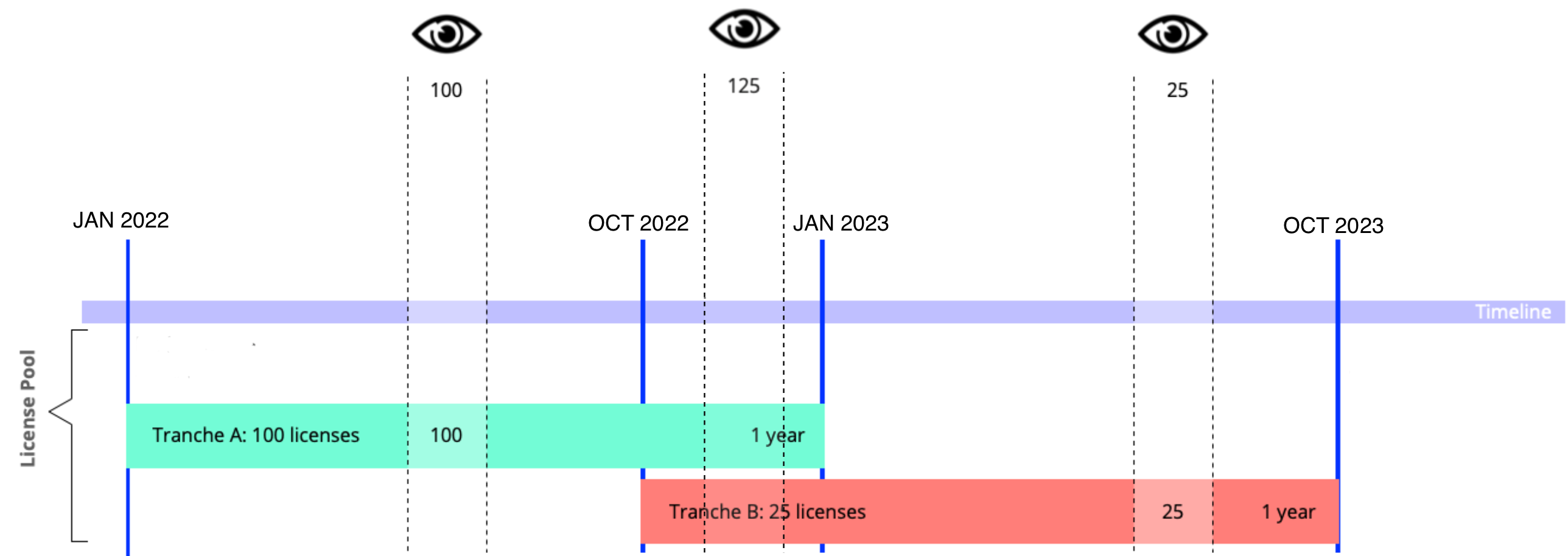In Parallels Desktop for Chrome OS Enterprise and Education Edition, the licenses are managed by Google’s licensing server, that Parallels Cloud interacts with.
This results in a licensing logic that is different from that of Parallels Desktop for Mac.
Per-user Licensing
Parallels Desktop for Chrome OS Enterprise and Education Edition licenses are assigned on a per-user basis.
This means that a single license will allow a single user to have Parallels Desktop installed on multiple Chrome OS devices, given that the devices are correctly set up with the organization's account. Similarly, 2 different users utilizing Parallels Desktop on a single Chrome OS device will require 2 licenses.
Extension and Allocation of Licenses
Google uses a paradigm of a “pool” of licenses.
Each Google account has a single pool of Parallels Desktop for Chrome OS Enterprise and Education Edition licenses associated with it.
When you purchase a set ("tranche") of licenses, you simply add it to the pool.
Example:
1. You have a set of 100 Parallels Desktop for Chrome OS Enterprise and Education Edition licenses purchased in January and expiring on January next year (tranche A).
2. In October, it turns out that you need 25 additional licenses.
3. You purchase a redemption key for 25 1-year licenses and redeem it under your Google account (tranche B).
4. So now you have a pool of licenses with:
- 100 licenses expiring on January next year;
- 25 licenses expiring on October next year.
This means that unless additional licenses are redeemed under your Google account:
- between October and January, your organization will have 125 active licenses;
- after that, the 100-license "tranche" will expire, and there will be 25 active licenses, expiring in October.

Google's licensing server takes care of automatic re-allocation of the licenses, so there is no need to activate/reactivate Parallels Desktop for any given users, as long as the total number of active licenses is equal or larger than the total number of users.
Was this article helpful?
Tell us how we can improve it.